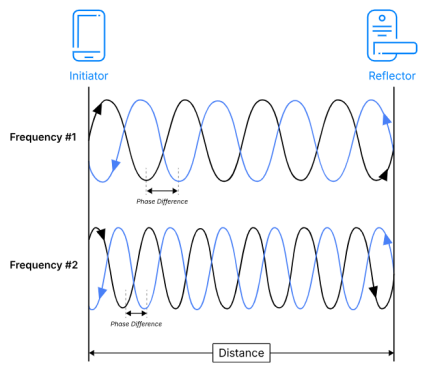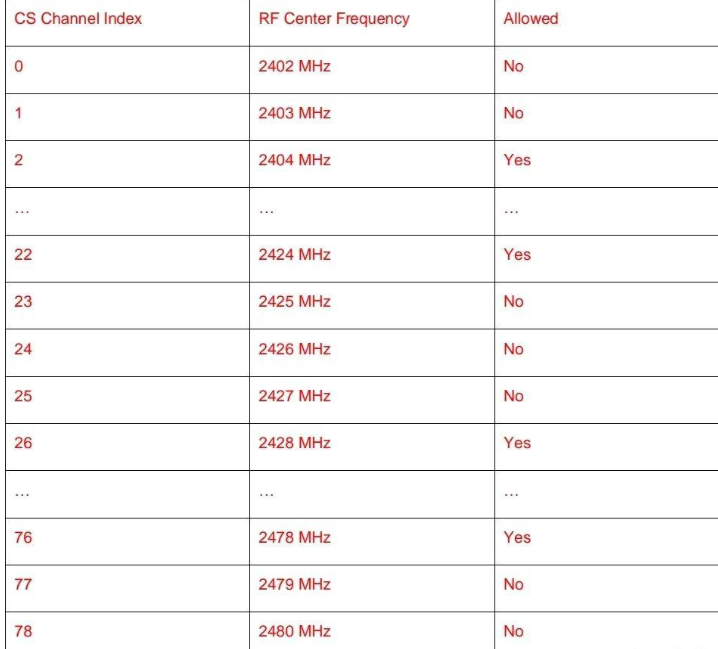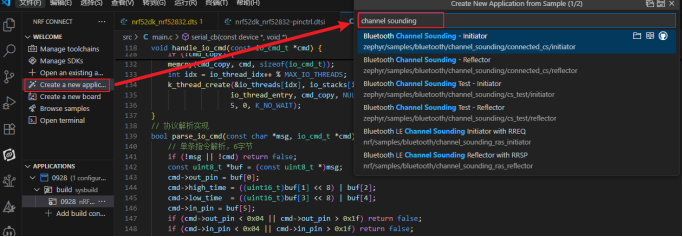As Bluetooth technology continues to evolve, its role has expanded beyond simple communication to include spatial awareness. The introduction of Channel Sounding in the Bluetooth 6.0 standard enables centimeter-level positioning and secure distance measurement for the first time. This breakthrough redefines Bluetooth's spatial precision and opens up new possibilities in smart access control, asset tracking, and industrial positioning.
This article explains the working principles of Bluetooth Channel Sounding, recommends suitable development modules, and explores its applications in key IoT scenarios.
Channel Sounding, introduced in Bluetooth 6.0, is a major innovation designed to enable secure and precise distance measurement by measuring the physical properties of radio signals as they propagate between devices. This technology significantly improves the accuracy and security of distance measurement.
The following table compares the two core ranging technologies used in Channel Sounding:
Characteristic | Phase-Based Ranging (PBR) | Round-Trip Time (RTT) Ranging |
Core Principle | Calculates distance using the phase difference of signals at multiple frequencies | Measures the time it takes for a signal to travel back and forth between devices (Time of Flight, ToF) |
Distance Formula | Distance ∝ (Phase Difference) / (Frequency Difference) | Distance = (Speed of Light × Flight Time) / 2 |
Key Benefits | High potential accuracy and robust performance in complex environments | Intuitive principle, simple calculation, inherently time-secure |
Challenges | Distance ambiguity due to phase periodicity | Requires extremely precise clock synchronization between devices |
Channel detection does not rely on a single method, but can combine PBR and RTT to obtain more reliable results. Its workflow is as follows:

At the beginning of ranging, the devices establish their roles: the active initiator is the Initiator, and the other is the Reflector. These two roles typically correspond to the central device and peripheral device in a Bluetooth connection in terms of physical connection.
The channel detection process is carried out based on an encrypted low-power Bluetooth connection, providing a secure foundation for all subsequent measurement data exchanges and effectively preventing eavesdropping and tampering.
This is the actual measurement phase, where the initiator and reflector exchange specific signals or data packets on multiple channels (up to 72) in the pre-agreed 2.4GHz frequency band.
In PBR mode, a single frequency "tone" is exchanged between devices.
In RTT mode, devices exchange data packets and accurately record the departure and arrival time of each packet.

To improve accuracy and reliability, channel sounding supports the use of up to four antenna paths between devices (a total of eight antenna combinations). This effectively reduces the "multipath effect" interference caused by radio signal reflections, making the measurement result closer to the true straight-line distance.
The reflector sends the measured data back to the initiator. The initiator's controller is responsible for the underlying measurement and then reports the raw data to the host through the host controller interface. Ultimately, the application on the host calculates the final distance value based on the PBR or RTT algorithm.


High accuracy: Traditional Bluetooth uses received signal strength indication (RSSI) for coarse ranging, with an accuracy of only approximately ±5 meters. Channel Sounding achieves sub-meter (less than 1 meter) accuracy, achieving ±0.3 meters within 5 meters and ±0.5 meters beyond 5 meters.
Enhanced security: In addition to encrypted connections, security features such as a distributed random number generator are introduced to randomize channel selection and effectively defend against man-in-the-middle and relay attacks.
Standardization and low cost: As part of the Bluetooth core specification, this technology is expected to be ubiquitous in a wide range of devices. For applications that already use Bluetooth communication, enabling this feature generally does not require additional dedicated hardware, which helps reduce costs.
The Nordic nRF54 Series SoCs are the latest generation of wireless chips designed to support Bluetooth 6.0 and Channel Sounding.
Core platform and chip specifications (taking nRF54L15 as an example):
128 MHz ARM Cortex-M33
1.4 MB non-volatile memory (NVM) + 256 KB RAM
Supports BLE + multiple protocols (such as Bluetooth 6.0, Bluetooth Mesh, Thread, Zigbee, 2.4 GHz proprietary protocols)
Channel Sounding support through nRF Connect SDK v3.0.1 or later
BLE receive sensitivity: –96 dBm (1 Mbps)
Maximum transmit power: +8 dBm
Ultra-low power consumption and versatile design
Based on these advanced SoCs, MinewSemi offers a full range of modules supporting Bluetooth 6.0 and Channel Sounding, including:
ME54BS01, ME54BS03, ME54BS11, ME54BS12 – multiple configurations for diverse development needs
ME54BS61 – compact 6 × 6 × 1.8 mm size, ideal for wearables and medical devices
ME54BS0A – built-in Power Amplifier (PA) with transmit power up to +22 dBm for long-range applications
Developers can easily create customized Channel Sounding applications using NCS sample programs, enabling fast prototyping and product integration.

In complex indoor environments, precise positioning (“where exactly is an object in the room”) is far more valuable than regional presence detection (“is the object in the room”).
How it works:
Multiple fixed Initiators are deployed in warehouses, factories, or homes as positioning base stations. Reflector tags are attached to assets that need to be tracked (such as tools, boxes, and medical equipment).

Scenario description:
Warehouse "hot and cold" map: The system can accurately locate a tool on which shelf and which layer on the map (with sub-meter accuracy), greatly improving inventory, search, and management efficiency.
Preventing the loss of valuable assets: Museums, galleries, or shops can equip valuable exhibits or merchandise with tags. The system monitors the precise location of the item in real time and generates an alarm if it moves beyond a safe range or enters an unauthorized area.
Personal belongings search: Find keys, remote controls, etc. The phone can act like a radar, providing precise direction and distance guidance (e.g., "The key is 3.2 meters in front of you on the left").
Value:
Accuracy: A leap from "area presence detection" to "precise positioning".
Multipath effect suppression: Through multi-antenna path measurement, it effectively overcomes the reflection interference of complex indoor environments (metal shelves, walls) on radio signals, and obtains a straight-line distance that is closer to the actual distance.
This application perfectly solves the key problem of "Is the user inside or outside the door?"
How it works:
An Initiator is installed on the door or gate, and the user's mobile phone or smart tag acts as a Reflector.

Scenario description:
Keyless Entry:
Traditional Bluetooth locks may unlock as soon as the user approaches the door (2-3 meters away), posing a security risk. Channel detection allows you to set a precise trigger distance (e.g., 0.5 meters). The system unlocks the door only when it accurately determines the user is standing in front of it and confirms their identity; it won't trigger if they're just passing by.
Restricted Area Access:
In sensitive areas such as data centers and laboratories, automatic door opening can be controlled by precise distance thresholds (such as 1 meter) to prevent tailgating or accidental entry.
Value:
Accuracy: Avoids misjudgments such as “approaching but not arriving” or “leaving but not locked” due to RSSI signal fluctuations.
Security: It effectively defends against relay attacks. Attackers cannot deceive the system by amplifying and forwarding signals because the system measures the flight time of radio signals, which cannot be forged. The time delay introduced by relaying behavior will be detected and rejected by the system.
In demanding industrial environments, precise and reliable positioning of personnel and equipment is the cornerstone of safety and efficiency.
How it works:
A positioning network is deployed in a factory or construction site. Workers wear helmets with integrated reflectors, and equipment (such as AGVs and robotic arms) has built-in initiators or reflectors.

Scenario description:
Personnel Safety and Electronic Fences: The system accurately determines whether workers enter hazardous areas (such as those around high-voltage equipment or robotic work areas). Once a person enters a pre-set "electronic fence," an alarm is automatically triggered or equipment is shut down.
Workflow optimization and scheduling: Accurately track the locations of forklifts and AGVs, optimize paths, and avoid collisions; analyze workers' movement trajectories on the production line to optimize workflows.
Value:
Reliability: Channel detection is much more robust than RSSI in complex RF environments filled with metal and machinery.
Low power consumption: Compared with similar high-precision technologies such as UWB, Bluetooth consumes less power and is more suitable for portable devices and sensors that need to work for a long time.
Bluetooth® Channel Sounding technology is transforming Bluetooth from a short-range communication tool into a foundation for spatially aware connectivity.
With its strong lineup of nRF54 series–based modules, MinewSemi brings this advanced technology into practical use, enabling high-precision sensing, low-power connectivity, and secure communication across diverse applications.